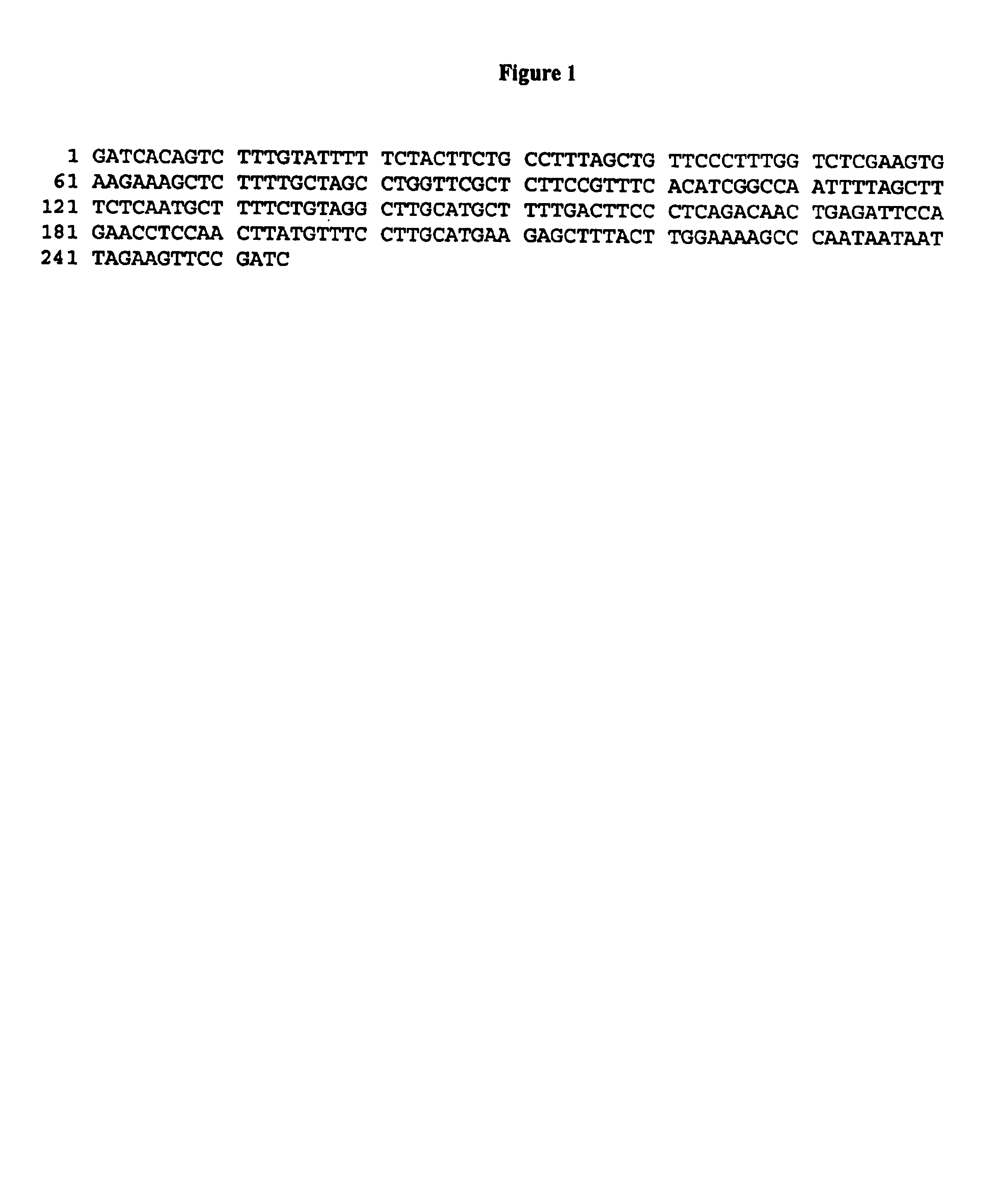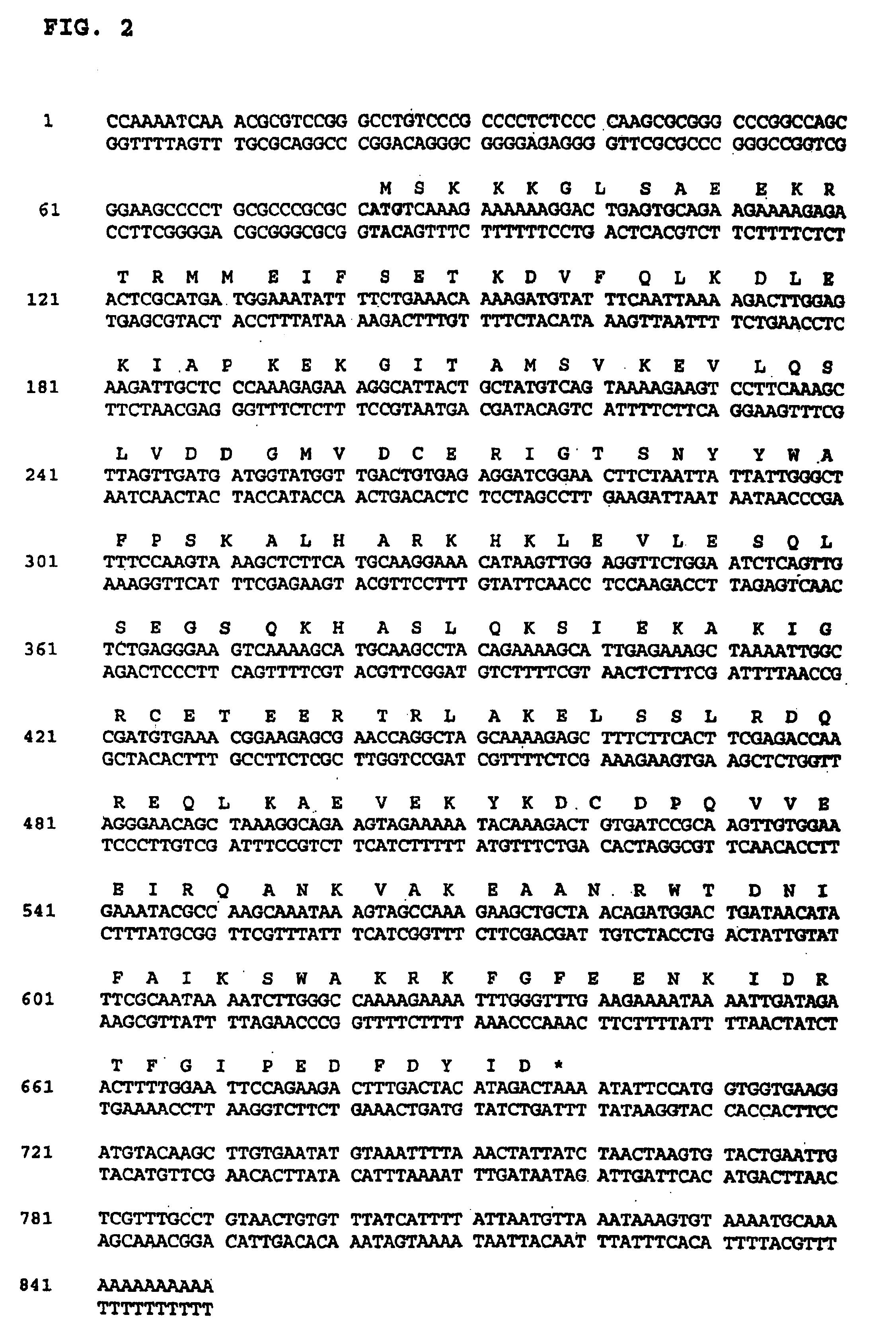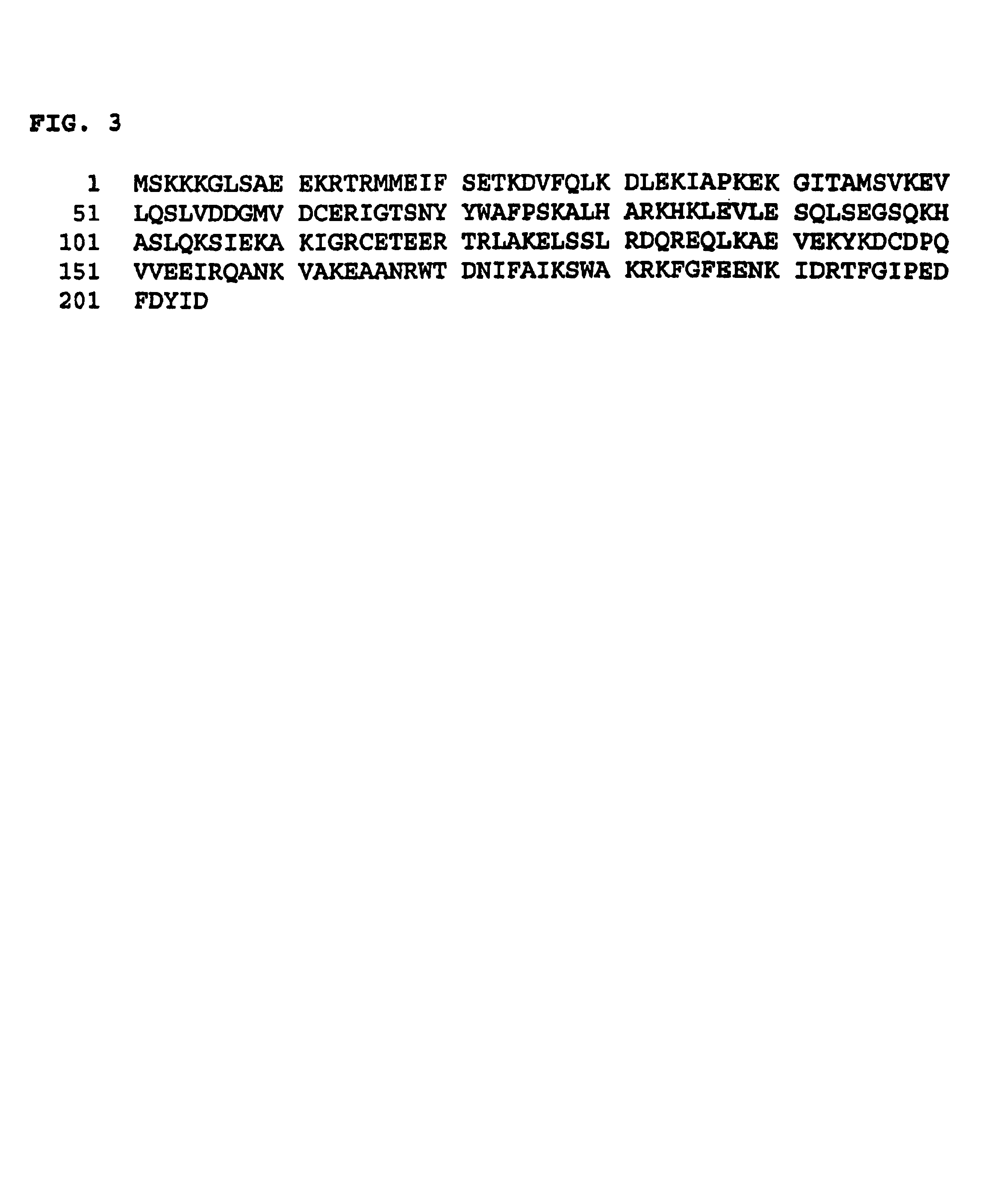121P1F1: a tissue specific protein highly expressed in various cancers
- Summary
- Abstract
- Description
- Claims
- Application Information
AI Technical Summary
Benefits of technology
Problems solved by technology
Method used
Image
Examples
example 1
SSH-Generated Isolation of a cDNA Fragment of the 121P1F1 Gene
Materials and Methods
LAPC Xenografts and Human Tissues:
[0230]LAPC xenografts were obtained from Dr. Charles Sawyers (UCLA) and generated as described (Klein et al, 1997, Nature Med. 3: 402-408; Craft et al., 1999, Cancer Res. 59: 5030-5036). Androgen dependent and independent LAPC-4 xenografts LAPC-4 AD and AI, respectively) and LAPC-9 AD and AI xenografts were grown in male SCID mice and were passaged as small tissue chunks in recipient males. LAPC-4 and -9 AI xenografts were derived from LAPC-4 or -9 AD tumors, respectively. To generate the AI xenografts, male mice bearing AD tumors were castrated and maintained for 2-3 months. After the tumors re-grew, the tumors were harvested and passaged in castrated males or in female SCID mice.
Cell Lines:
[0231]Human cell lines (e.g., HeLa) were obtained from the ATCC and were maintained in DMEM with 5% fetal calf serum.
RNA Isolation:
[0232]Tumor tissue and cell lines were homogeniz...
example 2
Full Length Cloning of 121P1F1 and Homology Comparison to Known Sequences
[0263]To isolate genes that are involved in the progression of androgen dependent (AD) prostate cancer to androgen independent (AI) cancer, we conducted an experiment with the LAPC-4 AD xenograft in male SCID mice. Mice that harbored LAPC-9 AD xenografts were castrated when the tumors reached a size of 1 cm in diameter. The tumors regressed in size and temporarily stopped producing the androgen dependent protein PSA. Seven to fourteen days post-castration, PSA levels were detectable again in the blood of the mice. Eventually the tumors develop an AI phenotype and start growing again in the castrated males. Tumors were harvested at different time points after castration to identify genes that are turned on or off during the transition to androgen independence.
[0264]The gene 121P1F1 was derived from an LAPC-9 AD minus LAPC-9 AD (28 days post-castration) subtraction. The SSH DNA sequence of 254 bp (FIG. 1) is nove...
example 3
Expression Analysis of 121P1F1 in Normal Tissues, Cancer Cell Lines and Patient Samples
[0268]Expression analysis by RT-PCR demonstrated that 121P1F1 expression is reminiscent of a cancer-testis gene (FIG. 5A). Normal tissue expression is restricted to testis and, to lower extent, it is detected in the thymus and ovary. Analysis of human patient cancer RNA pools shows expression in prostate, kidney, bladder, as well as lung cancers (FIG. 5B).
[0269]Extensive Northern blot analysis of 121P1F1 in 16 human normal tissues confirms the expression observed by RT-PCR (FIG. 6). A 1.2 kb transcript is detected in testis and to lower levels in thymus. 121P1F1 expression was also shown in prostate cancer xenografts and in all cancer cell lines tested, such as in prostate (LAPC 4AD, LAPC 4AI, LAPC 9AD, LAPC 9AI, LNCaP, PC-3, DU145 Tsu-Pr1, and LAPC4); bladder (HT1197, SCaBER, UM-UC-3, TCCSUP, J82, 5637), lung (A427, NCI-H82, NCI-H146), kidney (769-P, A-498, CAKI-1, SW 839), pancreas (PANC-1, Bx P...
PUM
| Property | Measurement | Unit |
|---|---|---|
| Fraction | aaaaa | aaaaa |
| Fraction | aaaaa | aaaaa |
| Fraction | aaaaa | aaaaa |
Abstract
Description
Claims
Application Information
 Login to View More
Login to View More - R&D
- Intellectual Property
- Life Sciences
- Materials
- Tech Scout
- Unparalleled Data Quality
- Higher Quality Content
- 60% Fewer Hallucinations
Browse by: Latest US Patents, China's latest patents, Technical Efficacy Thesaurus, Application Domain, Technology Topic, Popular Technical Reports.
© 2025 PatSnap. All rights reserved.Legal|Privacy policy|Modern Slavery Act Transparency Statement|Sitemap|About US| Contact US: help@patsnap.com



